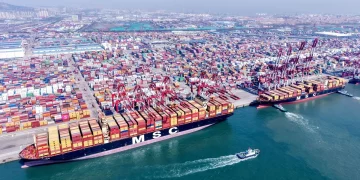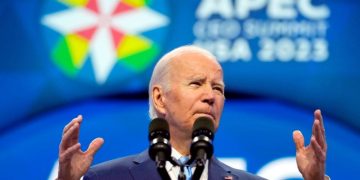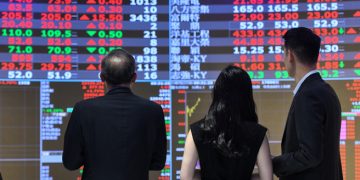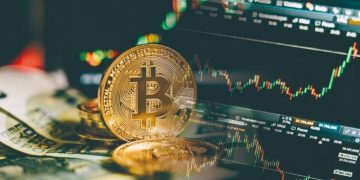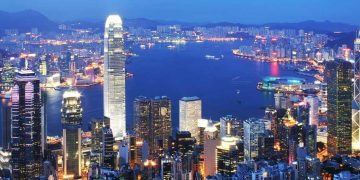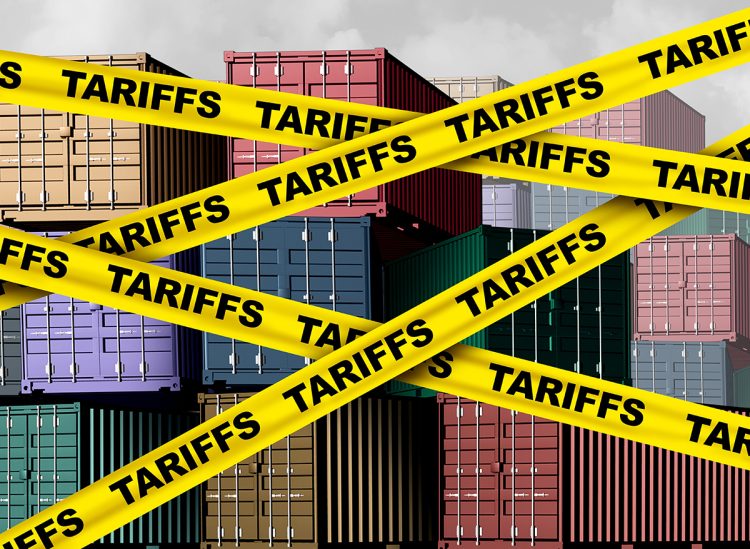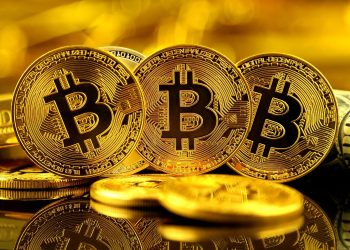The world economy has entered a new phase where protectionism, once a feature of past decades, has become a central driver of global economic policy. In recent years, governments have increasingly focused on shielding domestic industries, restricting imports, and favoring national interests over global integration. This rise of protectionism, coupled with global trade wars, inflationary pressures, and shifting economic policies, is rewriting the investment rules that have governed the global marketplace for decades.
As economic projections become more unpredictable and the global landscape shifts, investors must navigate an increasingly complex and fragmented world. In this article, we will explore the growth projections from major financial institutions, identify the key risk factors driving economic uncertainty, analyze sector-specific dynamics, and provide recommendations for investors and policymakers. Understanding these changes and adapting strategies accordingly will be crucial in a world where the economic rules are rapidly changing.
Growth Projections: A Fragmented Outlook
The outlook for global growth has become more uncertain as protectionist measures and geopolitical tensions have escalated. Institutions such as the International Monetary Fund (IMF), the World Bank, and OECD have downgraded their growth projections for the coming years, citing the rising influence of protectionist policies, trade wars, and inflationary pressures.
Global GDP Growth Projections
In 2023, the IMF reduced its global GDP growth forecast to 3.0%, down from earlier estimates of 3.5%, due to the prolonged trade tensions between the United States and China and the ongoing challenges posed by the COVID-19 pandemic. This projection underscores the fact that global economic recovery remains fragile, particularly in regions heavily dependent on trade, such as Asia and Europe.
The World Bank has similarly adjusted its growth forecasts for developing economies, with expected growth of 4.2% in 2023, a sharp decline from the 5.0% growth seen in the previous year. Emerging markets, particularly in Latin America and Africa, are expected to see reduced growth prospects, largely because of heightened trade barriers and protectionist policies. On the other hand, advanced economies like the US and EU are projected to experience slower, but steadier, growth, partly due to a shift toward domestic production and investment.
However, some economies, such as India and Southeast Asia, are expected to benefit from the decoupling of trade flows and increased diversification of manufacturing supply chains. These regions could become new hubs for production, but the long-term impact of these shifts remains uncertain.
Key Risk Factors: Trade Wars, Inflation, and Policy Shifts
As governments around the world increasingly turn to protectionism, several key risk factors are reshaping the global economic outlook. Understanding these factors is crucial for investors and policymakers trying to anticipate the future.
Trade Wars and Tariffs
The US-China trade war has been one of the most significant drivers of protectionism in recent years. Tariffs and trade restrictions have increased the cost of goods, disrupted supply chains, and reduced international trade flows. In addition to China, other economies, including the EU, Mexico, and Canada, have faced tariffs on key exports, leading to retaliatory measures and heightened tensions in global markets.
The impact of these trade wars has been profound. Global supply chains, which have been designed for efficiency and cost-effectiveness, are now being recalibrated to prioritize national security and self-sufficiency. While this might provide short-term relief for some domestic industries, the long-term effects could be detrimental to global economic integration and trade volumes. Protectionist policies are also raising the specter of stagflation—a combination of rising inflation and stagnant economic growth—which could deepen recession risks in vulnerable economies.
Inflationary Pressures
Inflation has surged globally, exacerbated by supply chain disruptions, rising commodity prices, and high energy costs. The US Federal Reserve and central banks around the world have responded by tightening monetary policy, raising interest rates, and signaling that inflation control will be a primary focus moving forward. While these policies may eventually rein in inflation, they also pose risks to economic growth, especially in emerging markets where higher interest rates could lead to capital outflows and currency devaluation.
The rising cost of living, along with inflation-driven wage pressures, could also lead to increased political instability, especially in countries already facing significant economic challenges. Latin American countries, such as Argentina and Brazil, have seen dramatic inflation rates, leading to social unrest and political turmoil.
Shifting Policy Environments
The rise of protectionism has been accompanied by a shift in economic policies, as governments seek to insulate their economies from global risks. This has led to changes in trade policies, fiscal policies, and regulatory environments, all of which have an impact on business operations and investment strategies.
Governments in major economies, particularly in the US and China, are focusing on reshoring critical industries, such as semiconductor manufacturing, energy production, and biotechnology. This shift is partly driven by the desire for self-sufficiency in strategic sectors but also reflects national security concerns. This means that global supply chains will continue to evolve, with potential disruptions to the availability of critical goods.
Policymakers are also facing increasing pressure to address income inequality, environmental sustainability, and climate change. These issues are likely to become central to investment decisions, as businesses and governments increasingly integrate environmental, social, and governance (ESG) factors into their strategies.

Sector-Specific Analyses: Winners and Losers in a Protectionist World
As protectionist policies reshape the global economy, certain sectors are emerging as winners, while others are poised to face significant challenges. Understanding these dynamics is crucial for investors looking to navigate the changing economic landscape.
Technology and Semiconductors
The technology sector, particularly semiconductor manufacturing, has become a focal point in the global race for economic dominance. The US and China are competing for control over this critical industry, with both nations investing heavily in domestic production. In the US, the CHIPS Act aims to incentivize domestic semiconductor production, while China has launched its own initiatives to reduce dependency on foreign suppliers.
For investors, the semiconductor industry represents a strategic opportunity. However, the geopolitical risks surrounding this sector are substantial, as trade restrictions and tariffs can disrupt global supply chains and increase costs.
Renewable Energy
The renewable energy sector is another area that stands to benefit from the rise of protectionism. Governments around the world are increasingly focused on energy security and sustainability, driving investment in clean energy technologies. In particular, countries with abundant natural resources for wind, solar, and hydroelectric power—such as Africa and Latin America—are becoming key players in the renewable energy market.
Investment in clean energy is not without its challenges, particularly in the face of rising protectionism. The shift away from global supply chains could drive up the costs of renewable energy technologies, but long-term growth prospects remain strong as governments commit to meeting climate goals.
Agriculture and Commodities
The agriculture and commodities sectors have been hit hard by protectionist policies, with tariffs on agricultural products and restrictions on the export of key resources such as oil, gas, and metals. However, certain regions, particularly in South America and Africa, are expected to see rising demand for agricultural exports, especially as global food security concerns mount.
Agriculture remains one of the most sensitive sectors to trade disruptions, as countries seek to protect their domestic food supplies while navigating the complex dynamics of global food production and distribution. For investors, this sector presents a mix of risk and opportunity, depending on geographic focus and market conditions.
Recommendations for Investors and Policymakers
Given the rising tide of protectionism, investors must adjust their strategies to navigate the changing landscape. Here are some key recommendations:
- Diversify Investments: In a world of rising protectionism, geographic diversification is more important than ever. Investors should consider spreading their portfolios across different regions and sectors to reduce the risk of exposure to any one market or policy environment.
- Focus on Resilient Sectors: Sectors that are closely tied to domestic production and energy security, such as renewable energy, infrastructure, and semiconductors, are likely to see significant growth in a protectionist world. However, investors must remain mindful of the geopolitical risks involved.
- Adapt to Changing Policies: With economic policies rapidly shifting, businesses and investors need to stay agile and responsive to regulatory changes. Understanding the policy direction of key economies and adjusting strategies accordingly will be crucial to success.
- Monitor Inflation and Interest Rates: The global rise in inflation presents a significant risk to investment returns, particularly in fixed-income securities. Investors must keep an eye on central bank policies and adapt their strategies to protect against inflationary pressures.
For policymakers, the primary focus should be on striking a balance between protecting domestic industries and maintaining global economic engagement. Engaging in multilateral trade agreements, promoting sustainable growth, and ensuring that protectionist measures do not lead to long-term economic isolation will be essential in navigating this new economic era.
Conclusion
The rise of protectionism is rewriting the investment rules for the global economy, creating both risks and opportunities for investors. As trade wars, inflationary pressures, and policy shifts reshape the economic landscape, staying informed and agile will be critical for long-term success. By diversifying investments, focusing on resilient sectors, and adapting to changing policies, investors can navigate this turbulent period and position themselves for future growth.



